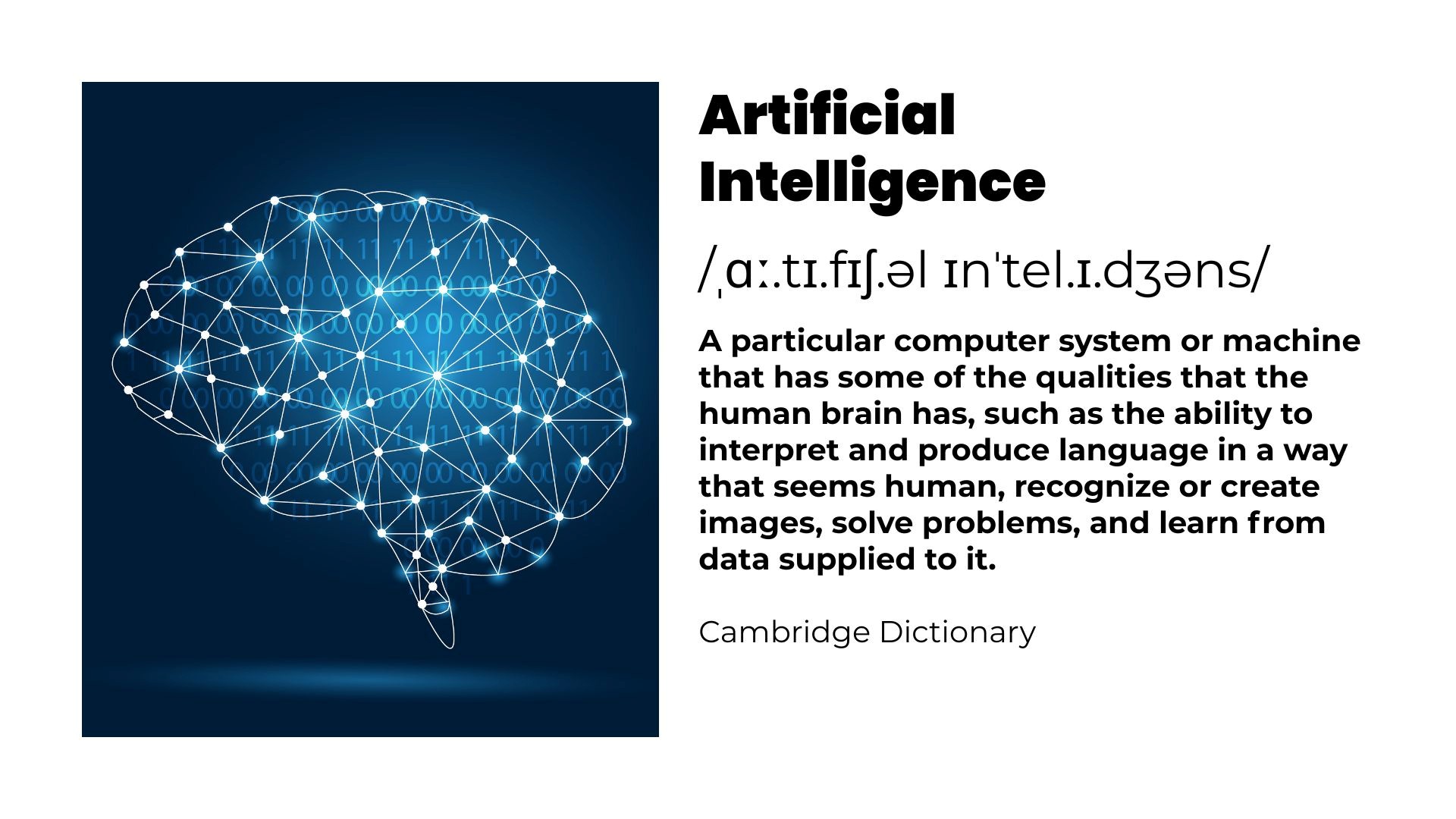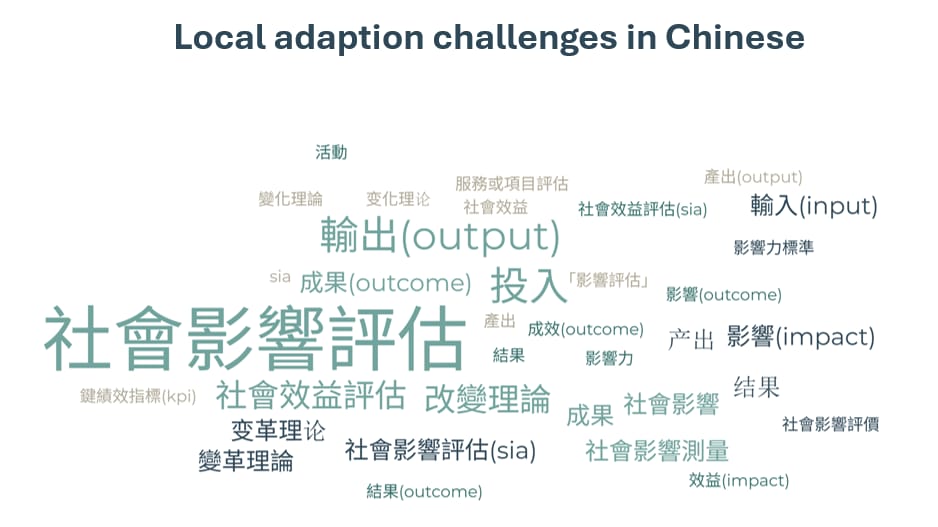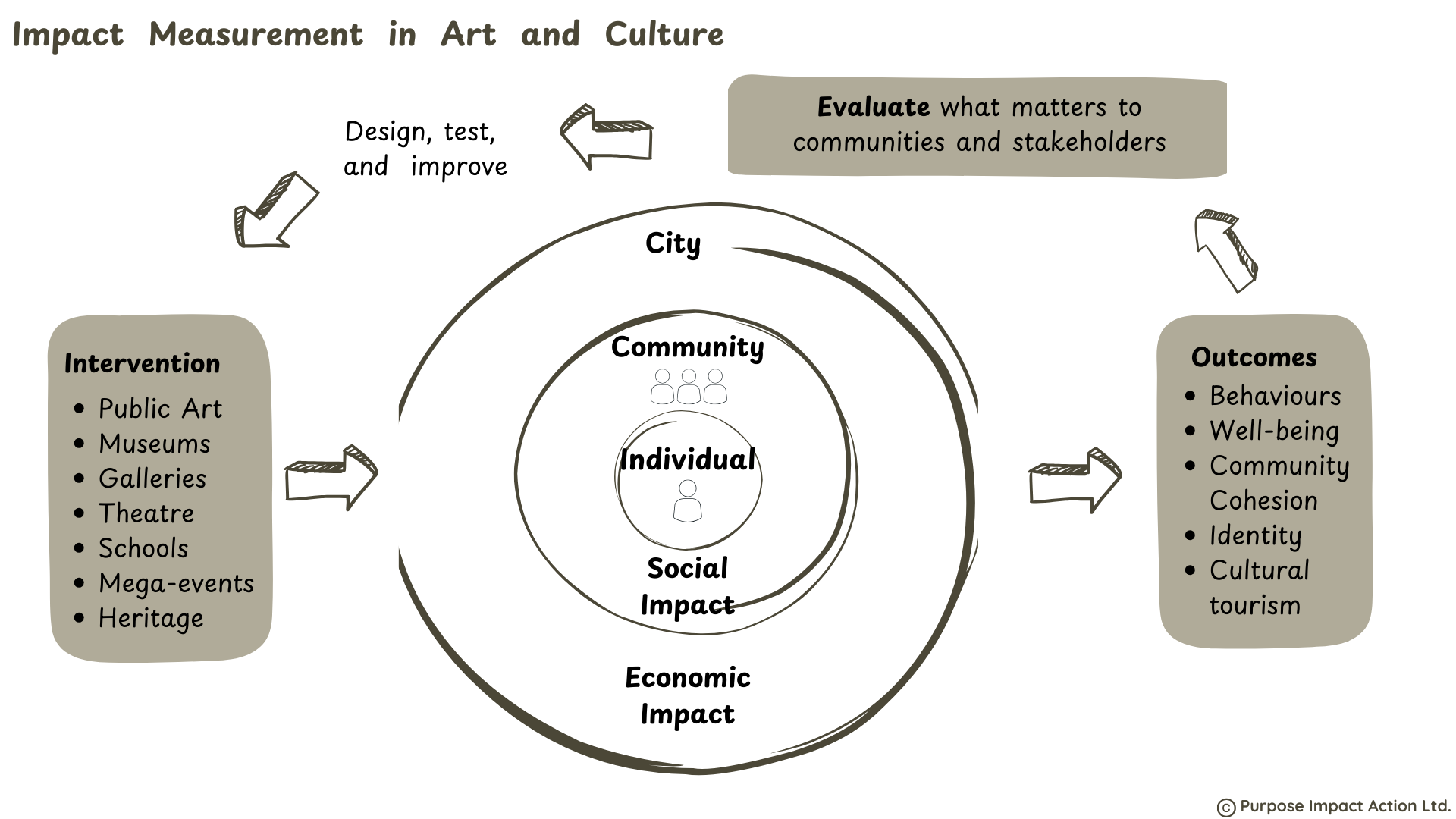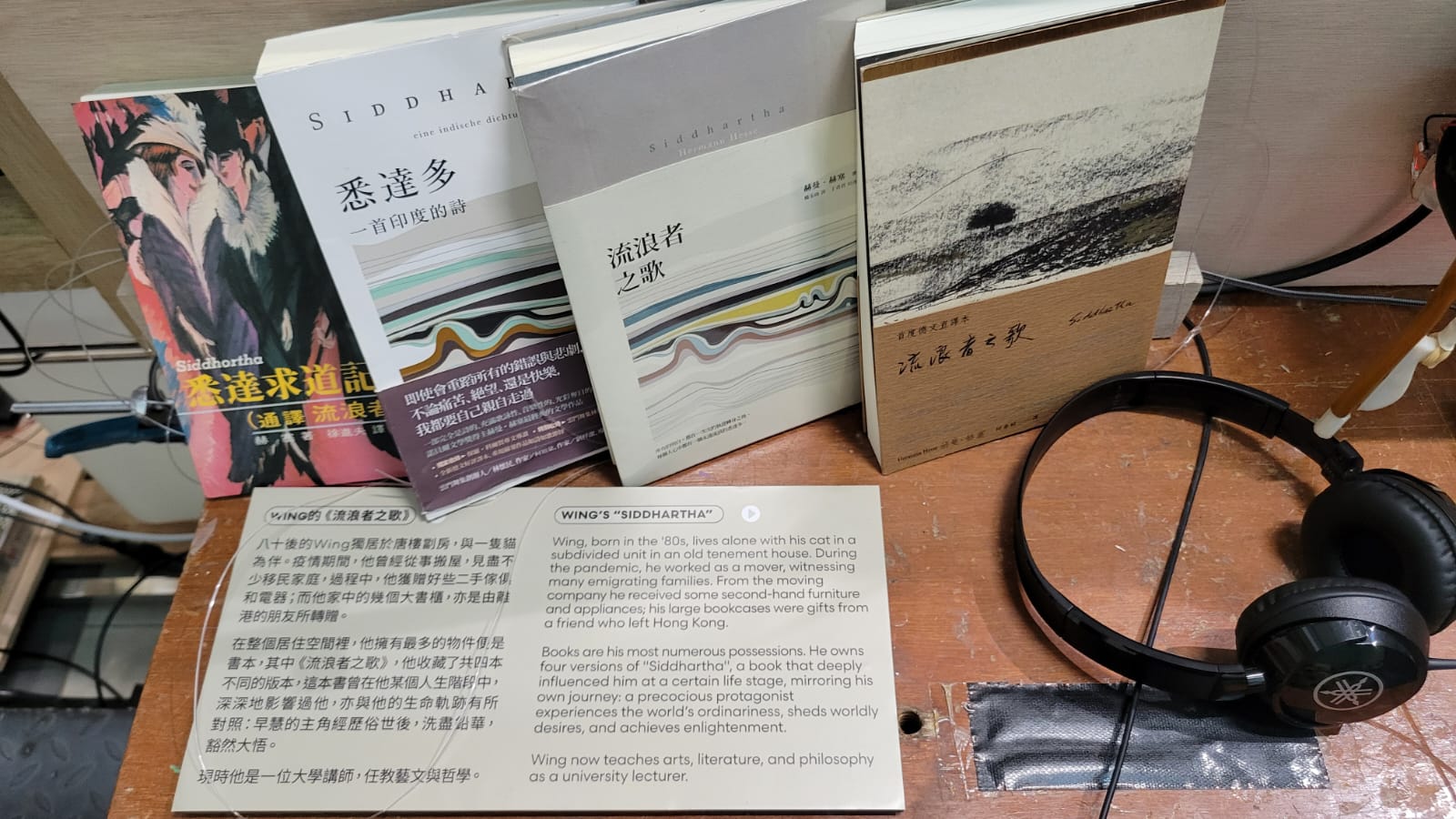At Purpose Impact Action, we’ve noticed a growing number of nonprofits and funders using theories of change to design and evaluate programmes. However, a recurring question is: what constitutes a good theory of change?
Often, what appears to be a ‘good’ theory of change comes in the form of elaborate designs and infographics. Whilst these can help with branding and organisational engagement, they often simplify the complexities within which organisations operate. Moreover, these theories of change frequently reflect the views of a single team or individual, therefore failing to incorporate diverse perspectives from the intended end-beneficiaries.
Given the critical role that theories of change play in effective impact measurement and management, it’s essential to be reflexive.
Here’s 5 ways to evaluate a good theory of change:
Look at whether the theory of change:
↳ Is 360 inclusive: are diverse end-beneficiaries, alongside delivery and governance staff involved in developing the theory of change?
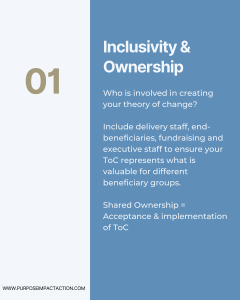
↳ Is plausible: does the sequence of events make sense in the real world and isn’t just theoretically sound?
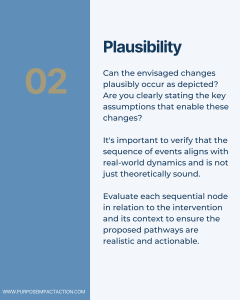
↳ Is testable: are events logically connected and illustrating clear causal pathways?
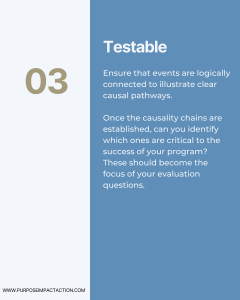
↳ Is measurable: can you identify indicators for each expected event (output, outcome and impact levels)?
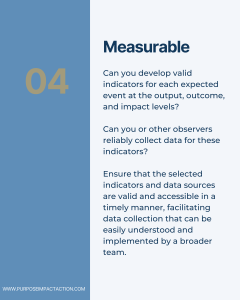
↳ Is clear: Do the text and visuals clearly communicate the story of expected change(s) to anyone who might read it?
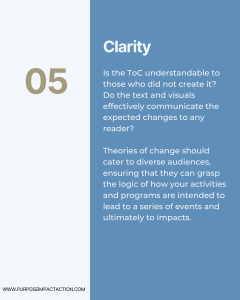
By Marianna Lemus-Boskovitch, Senior Consultant, Purpose Impact Action
Share your thoughts in the comments below


